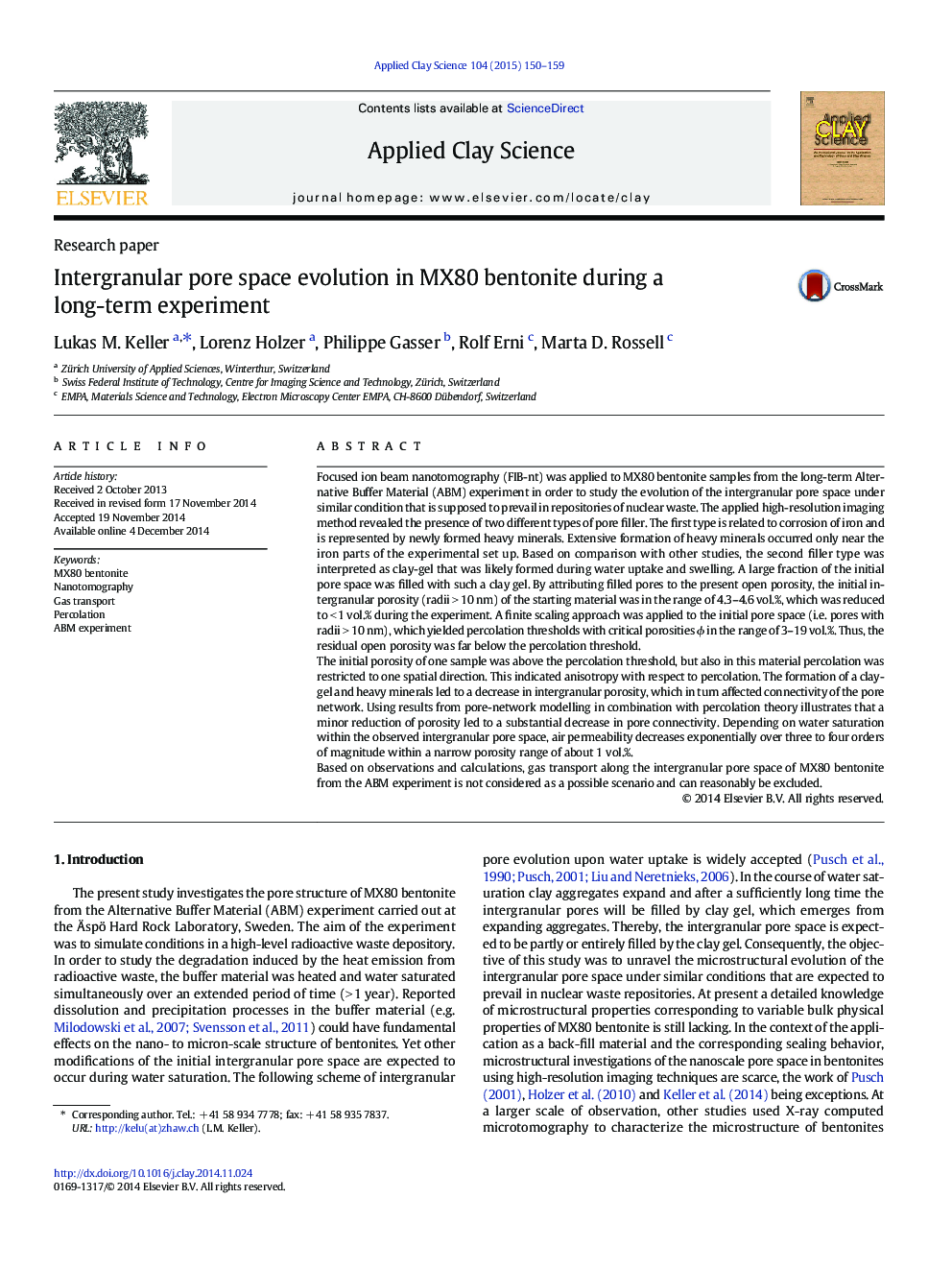| کد مقاله | کد نشریه | سال انتشار | مقاله انگلیسی | نسخه تمام متن |
|---|---|---|---|---|
| 1694624 | 1519074 | 2015 | 10 صفحه PDF | دانلود رایگان |

• Evolution of intergranular pore space of MX-80 bentonite during long-term experiment.
• Interaction between Fe released from corroding steel and MX-80 bentonite.
• Percolation and connectivity of intergranular pore space in MX-80 bentonite.
Focused ion beam nanotomography (FIB-nt) was applied to MX80 bentonite samples from the long-term Alternative Buffer Material (ABM) experiment in order to study the evolution of the intergranular pore space under similar condition that is supposed to prevail in repositories of nuclear waste. The applied high-resolution imaging method revealed the presence of two different types of pore filler. The first type is related to corrosion of iron and is represented by newly formed heavy minerals. Extensive formation of heavy minerals occurred only near the iron parts of the experimental set up. Based on comparison with other studies, the second filler type was interpreted as clay-gel that was likely formed during water uptake and swelling. A large fraction of the initial pore space was filled with such a clay gel. By attributing filled pores to the present open porosity, the initial intergranular porosity (radii > 10 nm) of the starting material was in the range of 4.3–4.6 vol.%, which was reduced to < 1 vol.% during the experiment. A finite scaling approach was applied to the initial pore space (i.e. pores with radii > 10 nm), which yielded percolation thresholds with critical porosities ϕ in the range of 3–19 vol.%. Thus, the residual open porosity was far below the percolation threshold.The initial porosity of one sample was above the percolation threshold, but also in this material percolation was restricted to one spatial direction. This indicated anisotropy with respect to percolation. The formation of a clay-gel and heavy minerals led to a decrease in intergranular porosity, which in turn affected connectivity of the pore network. Using results from pore-network modelling in combination with percolation theory illustrates that a minor reduction of porosity led to a substantial decrease in pore connectivity. Depending on water saturation within the observed intergranular pore space, air permeability decreases exponentially over three to four orders of magnitude within a narrow porosity range of about 1 vol.%.Based on observations and calculations, gas transport along the intergranular pore space of MX80 bentonite from the ABM experiment is not considered as a possible scenario and can reasonably be excluded.
Journal: Applied Clay Science - Volume 104, February 2015, Pages 150–159